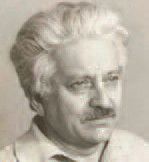The Walt Disney of Israel
There are many unknown corners of interest in Israel.
There are many heroes in our history who are yet unknown.
We recently joined an outing to the Joseph Bau house/museum (not to be confused with the Bauhaus museum), organized by Telfed. A very remarkable experience.
Trip Advisor rated the Joseph Bau Museum number 1 out of 233 places of interest to visit in Israel.
Joseph was born in 1920 and in 1950 came to Israel with his wife Rebecca. His daughter Tzila
gave us a lecture. She is passionate about her father's achievements and story.
There are books for sale at the museum in a few languages, including in English, translated from Polish. Joke books, his story in a humorous way. These sales assist in supporting the upkeep and rent of the premises.
Joseph Bau was the "Walt Disney of Israel".
He was a graphic artist born in pre-war Poland who turned his artistic talents to forgery, in order to save his fellow Jewish concentration camp inmates during the Holocaust. With his wife Rebecca, who was also actively involved in the rescue of Jews, they saved hundreds of lives from certain death at the hands of the Nazis.
But rescue is only a part of the riveting story that his daughter tells.
The parents met in the Pladhow concentration camp and fell in love. They were secretly married in the camp barracks, a scene which is shown in the movie Schindler's List. Many scenes in the movie are true incidences of Bau's experience.
In Israel, Joseph became a pioneering artist and the father of the cartoon industry. His art helped transform the new State of Israel, infusing it with hope, humor and optimism. Joseph Bau became the chief forger of the Mossad agency. In his studio one can see the equipment he built himself to create animation, and a small movie theater to show his creations. His small screen is probably the smallest screen in the world. There's no money to be able to put that fact in the Guinness Book of Records.
Bau's research of the Hebrew language and the first works of graphic art can be seen, as well as the original table he worked on in the ghetto. It is also where he forged papers, such as those that enabled the famous spy Eli Cohen to penetrate the Syrian political eschelon.
Today Joseph Bau's art continues to be exhibited in museums and galleries all over the world at international venues, such as the Israeli Knesset and UN headquarters in New York.
The museum serves as a cultural center offering educational programs to schools and colleges.
The property is at 9 Berdichevsky Street, Tel Aviv, a most expensive address. It will probably be sold, as its owner wants to redevelop the site. The museum will be destroyed. The Bau sisters, Tzila and Hadassa, don't have the finance to reopen elsewhere. They have approached many philanthropists with no success.
It would be a great pity to lose this valuable heritage museum.
The Joseph Bau Museum
9 Berdichevsky Street,
Tel Aviv
Tel: 054 430 1499
This email address is being protected from spambots. You need JavaScript enabled to view it.
http://josephbau.com
F: josephbauhouse









Comments